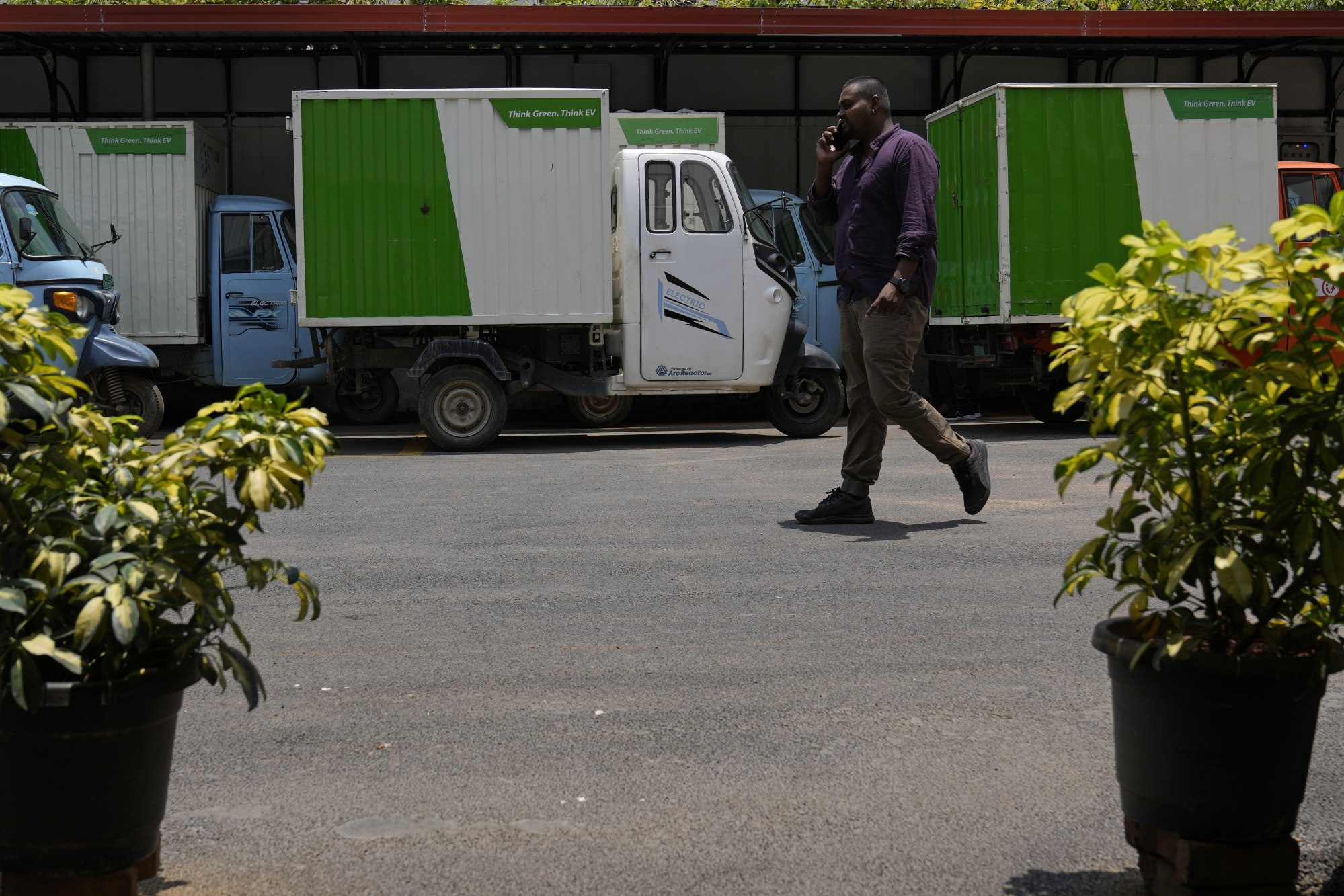
India, dependent on fossil fuels, is experiencing an EV boom driven by incentives and cost-conscious customers
- A US$1.3 billion federal plan to encourage EV manufacturing and offer discounts for customers, along with rising fuel costs are driving up sales, analysts said
- But the long-term viability for EVs depends on securing supplies of critical minerals needed for batteries, as well as other parts, one analyst said
A US$1.3 billion federal plan to encourage EV manufacturing and provide discounts for customers, along with the past decade’s rising fuel costs and consumer awareness of the long-term cost benefits are combining to drive up sales, analysts say.

Balaji Premkumar, a 25-year-old rickshaw delivery driver, switched to an EV earlier this year. At most traffic stops he’s surrounded by gas-powered three-wheelers that rumble and rattle, spewing thick smoke into the air – something that his used to do, too, before he went electric.
Premkumar said the new vehicle is easier and more comfortable to drive and he can already see a cost difference.
Tesla gains speed in India EV race as China’s BYD gets throttled
“If I spend 60 rupees to charge the vehicle for three hours, I get 80 kilometres (50 miles). In a diesel vehicle I’ll be spending at least 300 rupees (US$3.60) to get the same mileage,” he said.
Santhosh Kumar, 23, a rickshaw delivery driver for Bangalore-based logistics company City Link, can also feel the benefits since he switched to electric.
“The vehicle never breaks down and there are a lot of charging points all around so I never run out of charge,” said Kumar. Charging points in India have increased tenfold, according to Elizabeth Connolly, an energy technology and transport analyst at the IEA.
It’s only a matter of time before everyone shifts to electric
While Kumar does not have his own electric vehicle yet – the one he drives belongs to the company – he dreams of buying his own, or even several that he can rent out.
“It’s only a matter of time before everyone shifts to electric,” he said.
Two- and three-wheelers are mostly used to make deliveries or give rides. They clock up miles fast, making an electric model a noticeably cheaper option than paying for gas, said N.C. Thirumalai at the Bangalore-based think tank, Center for Study of Science, Technology and Policy.
But he said long-term viability for electric vehicles depends on securing supplies of the critical minerals needed for batteries, as well as other parts. The source of electricity to charge the vehicles also must be clean, which isn’t currently the case.
Is Asia finally turning away from filthy fossil fuels to embrace green energy?
More than three quarters of India’s electricity is generated from fossil fuels – mostly coal – according to government reports. And mining companies, including in India, have been criticised for unsafe mining practices of minerals needed to make components for electric vehicles and other clean energy infrastructure.
“As EVs increase and minerals such as lithium begin to be sourced within country, the mining industry should definitely make sure sustainable mining practices are taken forward,” said Thirumalai.
Thirumalai is optimistic about cleaner electricity in the future. The “huge thrust for renewables in the country” means electric vehicle emissions should reduce in time.
While progress on renewables has been mixed, India plans to install 500 gigawatts of clean energy by the end of the decade – enough to power 300 million Indian homes – and aims to reach net zero emissions by 2070.

But the country also needs “to address how to unlock financing for EVs as well as associated industries” to bump up the number of people who can afford them, said Akshima Ghate of the New Delhi-based clean energy non-profit RMI India. Incentives like low-interest loans for potential customers and providing tax breaks for electric vehicles can ramp up sales, particularly for lower-income buyers, she said.
Still, Ghate thinks that India’s swift move to smaller electric vehicles can serve as a template for other emerging economies that are two- and three-wheeler nations, like Indonesia, the Philippines and some African countries.
When it comes to “setting benchmarks for developing economies, India plays a leading role,” she said.

